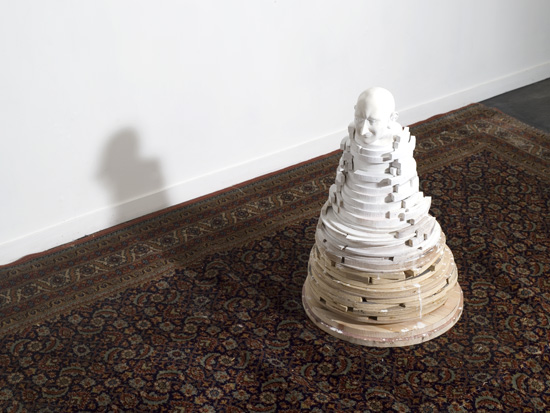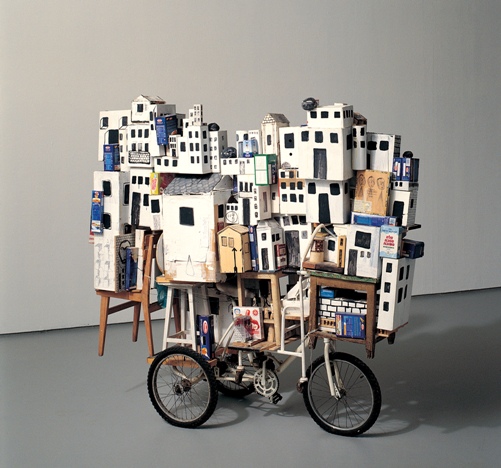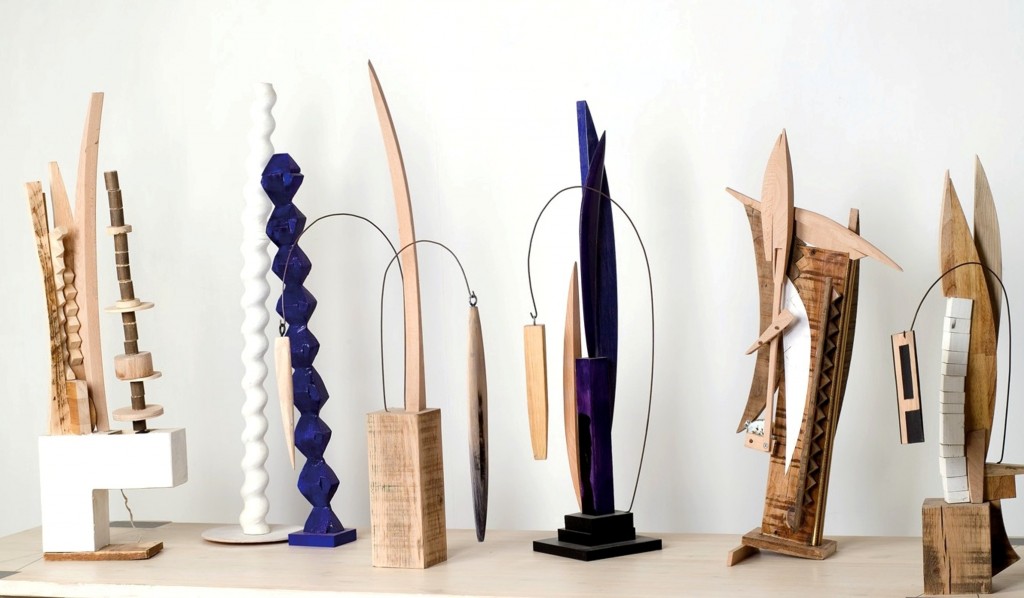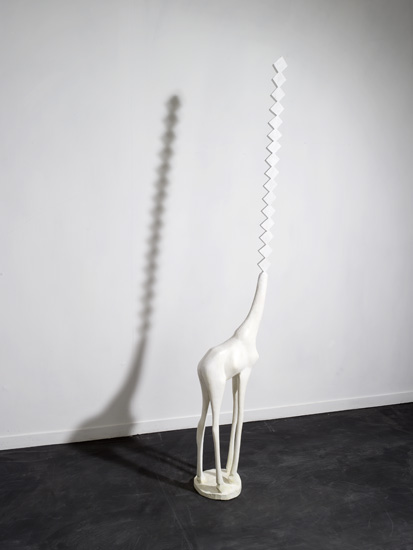The Open Museum at Tefen features the largest collection of monumental sculpture in the country. Laid out on grassy plateaus and rocky terrain are representative pieces by Israel’s leading sculptors, past and present. Imposing ‘heavy’ works, they fall into distinctive stylistic categories. In contrast, the lightweight sculptures, mobiles and ornately framed minimalist paintings that Philip Rantzer has brought together for Look Back in Anger, his mid-career exhibition at Tefen, defy a single categorization.
.
Displayed indoors in the giant hanger which has served for years as a huge exhibition space, these intimate pieces need careful study. Forming the main thrust of the show are the sculptural installations that Rantzer had produced in the last 10 years that combine family mementos and found items (e.g. furniture, rolled-up carpets, toys) with objects constructed by the artist from plaster, metal, wood and paper.
Many of these works are laced with that sly wit that Rantzer was the first to introduce into the serious business of making art in Israel.

But this wit is often tinged with sadness, a quality inferred by the title that Rantzer chose for this show which is taken from that of a John Osborne’s play written in 1956, the year that he was born. Yet, in conversation with historian Aviad Kleinberg, the artist asserts that his anger is not rage but a “sober, unsentimental look at the past.”
Rantzer’s past appears to have been dominated by the influence of his father, an autocratic personality whose spirit seems to haunt this show. Reference is made to him in several works as a fallen hero; the most intriguing rendering being a portrait of him set on a mini-pedestal where he resembles an insignificant pawn in a chess set.

At the entrance to the exhibition is The Big Cart, a tricycle stacked high with cardboard houses and boxes. This key work, in different versions, has surfaced, in Rantzer’s past exhibitions, including that held in 1999 in the Israeli pavilion at the Venice Art Biennale. This ‘traveling home’ appears to symbolize not only Rantzer’s own history as a immigrant and outsider – he came here from Romania at the age of four, but still apparently feels that he doesn’t quite belong – but also alludes to the plight of the wandering Jew, always on the move, fearful to put down roots.

As illustrated in this show, Rantzer is a true postmodernist; in his case, borrowing images and ideas mostly from the great sculptors of the 20th century. In particular, he appropriates iconic imagery from the lexicon of the great Romanian artist Brancusi; in particular his famous abstraction of a Bird in Flight; and the skyward pointing Endless Column built up from 17 rhomboid units. This column becomes a component in Rantzer’s rendering of a hangman’s gallows, and, is noted again in one of his more playful works where it replaces the neck of a wooden giraffe.

Surprise is a potent device whereby Rantzer reels in the attention of the viewer. In many instances, he does this by removing everyday objects from their customary surroundings. As a result they assume a new and strange identity. So, coming in close, one can appreciate the sureness and precision of his touch, but the meaning of his works is not always clear. For instance, in exhibiting, a wooden deer whose head has been chopped off and replaced by a roll of cellotape, is Rantzer just having fun? Or is he referring to cruel practices inflicted on helpless animals? In a show rich in its scope and ingenuity, the subtexts very often remain elusive.
The exhibition,curated by Ruthie Ofek and Amon Yariv of the Gordon Gallery, Tel Aviv, is open till 28th December 2010.
The Open Museum
Tefen Industrial Park, Western Galilee
Tel: 04: 9109600 Open Sunday to Thursday. Also on Saturday.





